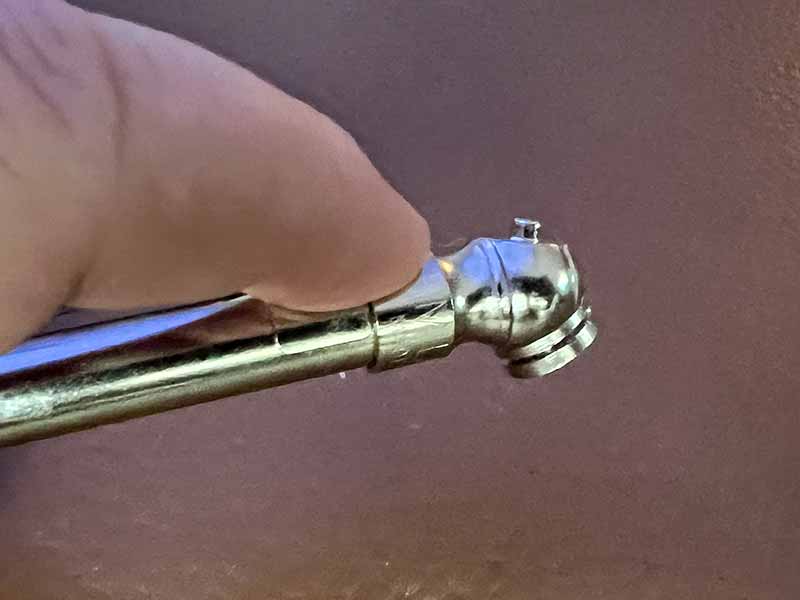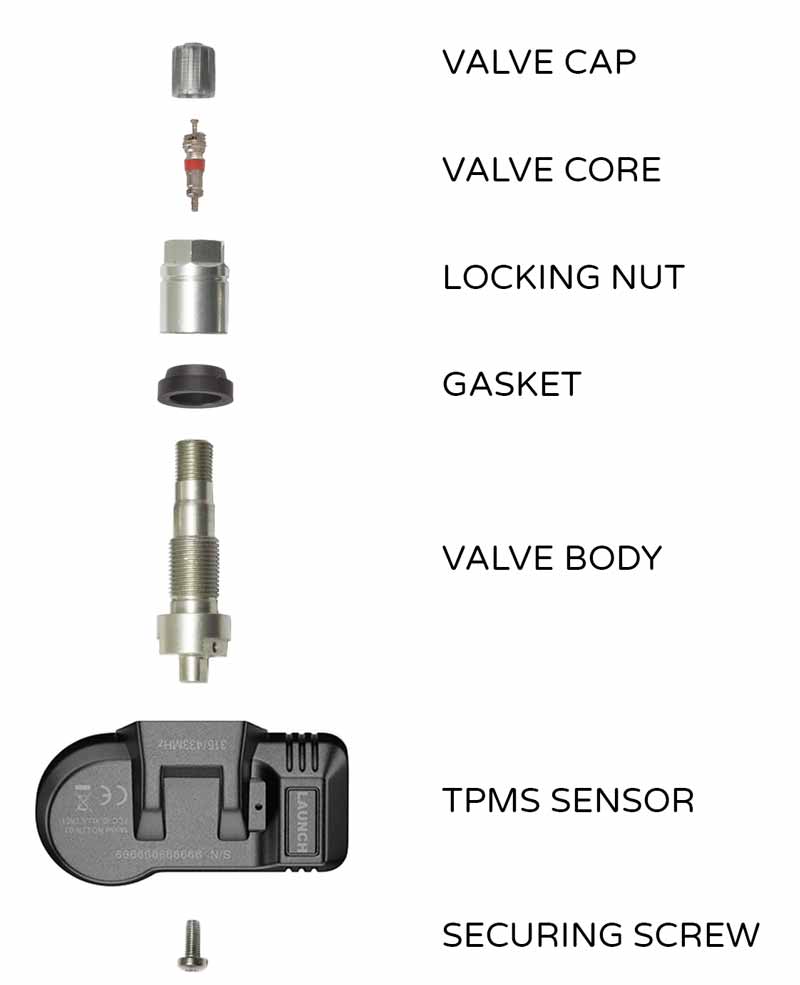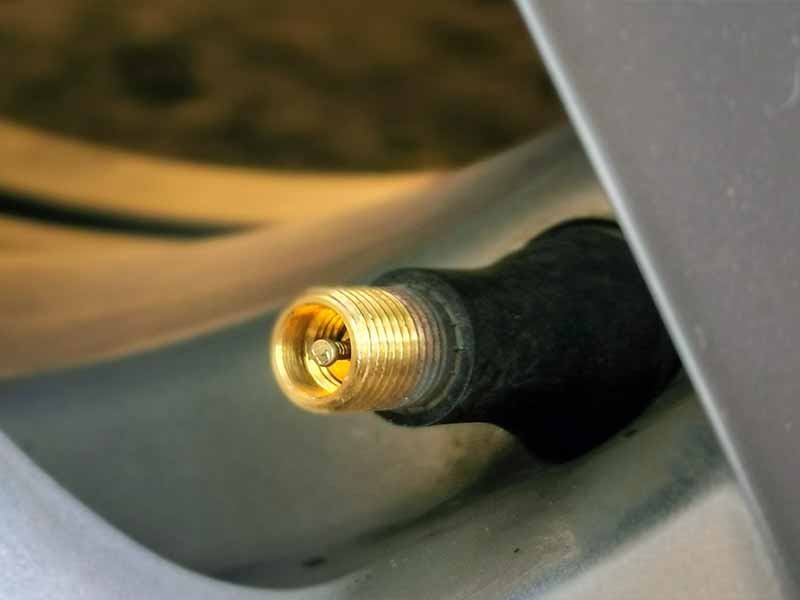Have you ever found yourself on a road trip, noticing your ride feels a bit off, and wondering if your tire pressure might be to blame? Adjusting tire pressure isn’t just about ensuring a smooth journey; it’s a crucial aspect of vehicle safety and performance.
How To Lower Tire Pressure
To lower tire pressure (PSI), use a tire pressure gauge to measure the current PSI, then release air by depressing the small pin inside the valve stem until the desired pressure is reached.
Ensure the adjusted pressure aligns with the manufacturer’s recommended tire pressure for optimal safety and performance.
In this article, we’ll delve deep into the basics of proper tire inflation and pressure, explore the tools and methods to adjust it, understand the vital role of the valve core, and wrap up with essential safety precautions and best practices every driver should know.
Let’s take a closer look.

Tools and Methods to Lower Tire Pressure
When it comes to adjusting the air in your tires, there are a few tools and methods that can help. Let’s go over them in simple terms.
Using a Tire Pressure Gauge
A tire pressure gauge is a handy tool that tells you how much air is in your tires. Here’s how to use it:
- Buy a Gauge: You can find these at auto stores, and they’re not too expensive.
- Remove the Valve Stem Cap: This is the small cap on your tire where the air goes in and out.
- Place the Gauge on the Valve Stem: Press it down firmly. The gauge will show a number – that’s the PSI of your tire.
- Compare the Number: Check this number against the recommended PSI for your car. If it’s too high, you’ll need to let some air out.
In all my years working with tires, I’ve found that a good tire pressure gauge is worth its weight in gold. It’s a small investment that can help you keep your tires in top shape.
Without Specialized Tools
Sometimes, you might find yourself needing to adjust your tire pressure without a gauge or other tools. Here’s what you can do:
- Use the Valve Stem Cap: Some valve stem caps can be used to press the small pin inside the valve stem. This will let out a bit of air. Listen for the hissing sound – that means air is coming out.
- Press the Valve Stem with a Pen or Small Object: If you don’t have the right kind of cap, you can use a pen or another small, pointy object to press the valve stem.
I remember a time when I was on a road trip and realized I overinflated one of my tires when I stopped for gas. I didn’t have my tools with me, but I used the back of a pen to let out a little air. It’s not the ideal method, but it can work in a pinch.

Valve Core Removal Tool
Fast Air Release Techniques
If you need to let out a lot of air quickly, there are a couple of methods:
- Remove the Valve Core: This is the fastest way to release all the air from a tire. The valve core is inside the valve stem. You can take it out with a special tool, but if you don’t have one, a small screwdriver might work. Just be careful and make sure to put the valve core back when you’re done.
- Press and Hold the Valve Stem: This method is slower than removing the valve core, but it’s simpler. Just press the valve stem with a cap, pen, or tool and hold it until you’ve let out enough air.
Safety First
No matter which method you use, always be careful. Letting out too much air can be dangerous. After adjusting the pressure, always double-check with a gauge to make sure you’re in the safe range.

The Role of the Valve Core in Tire Pressure Management
The valve core is a small but crucial part of your tire. It plays a big role in managing the air inside. Let’s break down what it is and why it’s important.
What is the Valve Core?
The valve core is a tiny component inside the valve stem of your tire. It’s the part that keeps the air in your tire from escaping when you’re not adding or removing air. When you press the valve stem to let air out or use a pump to add air, you’re interacting with the valve core.
Why is the Valve Core Important?
- Air Retention: The primary job of the valve core is to keep the air inside your tire. Without it, the air would just leak out, and your tire would go flat.
- Pressure Adjustment: The valve core allows you to add or remove air from your tire. When you use a pump or let air out, the valve core opens to let air move in or out.
I’ve come across situations where a faulty valve core was the reason for a tire losing air slowly. It’s a small part, but if it’s not working right, it can cause big problems.
How to Safely Remove and Replace the Valve Core
Sometimes, you might need to remove the valve core, especially if you want to let out a lot of air quickly. Here’s how to do it safely:
- Get a Valve Core Tool: This is a special tool made for removing and installing valve cores. It’s the best thing to use. However, if you don’t have one, a small screwdriver might work, but be very careful.
- Unscrew the Valve Core: Insert the tool into the valve stem and turn it counterclockwise. The valve core will unscrew and come out.
- Let Out the Air: With the valve core removed, the air will come out quickly. Be ready for the rush of air.
- Replace the Valve Core: When you’re done, screw the valve core back in using the tool. Turn it clockwise until it’s snug, but don’t over-tighten.
From my experience, removing the valve core is the fastest way to release all the air from a tire. But always remember to replace it securely. Driving without a properly installed valve core can be dangerous.
Taking Care of the Valve Core
- Check for Damage: If you notice your tire is losing air slowly, the valve core might be damaged. It’s a good idea to check it and replace it if needed.
- Keep it Clean: Dirt and debris can damage the valve core or cause it to not seal properly. When checking your tire pressure, make sure the area around the valve stem is clean.
In all my years working with tires, I’ve learned that the small parts, like the valve core, are just as important as the big ones. Taking a few minutes to check and care for them can save you a lot of trouble down the road.

Safety Precautions and Best Practices
When dealing with tire pressure, safety should always be your top priority. Tires are a vital part of your vehicle, and making sure they’re in good shape is essential for a safe drive. Let’s go over some key safety tips and best practices.
The Risks of Underinflated Tires
Driving with tires that don’t have enough air can be dangerous. Here’s why:
- Poor Handling: Underinflated tires can make your car harder to steer and control, especially when turning or braking.
- Increased Wear: Tires with too little air wear out faster. They can develop uneven wear patterns, which can lead to a bumpy ride and even reduce the life of the tire.
- Overheating: Tires without enough air can get too hot, especially when driving at high speeds. This can lead to tire failure or even a blowout.
In my time working with tires, I’ve seen the aftermath of driving on underinflated tires. It’s not pretty. A simple check can prevent a lot of problems.
Ensuring Proper Inflation
- Regular Checks: Make it a habit to check your tire pressure at least once a month. Even if they look fine, it’s always good to use a gauge and be sure.
- Use a Reliable Gauge: Not all tire pressure gauges are created equal. Invest in a good one, and always check its accuracy now and then.
- Adjust in the Morning: Tires give the most accurate pressure readings when they’re cold. Checking and adjusting in the morning, before you’ve driven much, is best.
I always tell folks that the few minutes you spend checking your tire pressure can save you hours of trouble later on. It’s a small task with big benefits.
After Adjusting Pressure
Once you’ve added or removed air from your tires, there are a few things you should do:
- Double-Check: Always use your gauge to check the pressure again after making adjustments. Make sure it’s at the recommended level.
- Replace the Valve Cap: This small cap keeps dirt and debris out of the valve stem. Make sure to put it back on securely.
- Inspect the Tire: Take a moment to look over the tire. Check for any signs of damage, like cuts, cracks, or bulges.
Over the years, I’ve learned that it’s the little details that matter. After adjusting your tire pressure, taking a few extra moments to check everything can make a big difference.
Recommended Tire Pressure
Always be aware of the recommended tire pressure for your vehicle. This information can be found in your car’s manual, on a sticker inside the driver’s door, or on the manufacturer’s website. And remember, front and rear tires might have different recommended pressures.
Resources
Below are some links you may find helpful when learning about tires
Final Thoughts
By regularly checking and adjusting your tires to the proper tire pressure, you not only ensure a smoother ride but also prolong the life of your tires and enhance fuel efficiency.
Remember, the right tools and knowledge are your best allies in this endeavor. Whether you’re a daily commuter or an occasional driver, keeping your tires at the proper PSI is a simple step with significant benefits.
Good luck and happy motoring.




